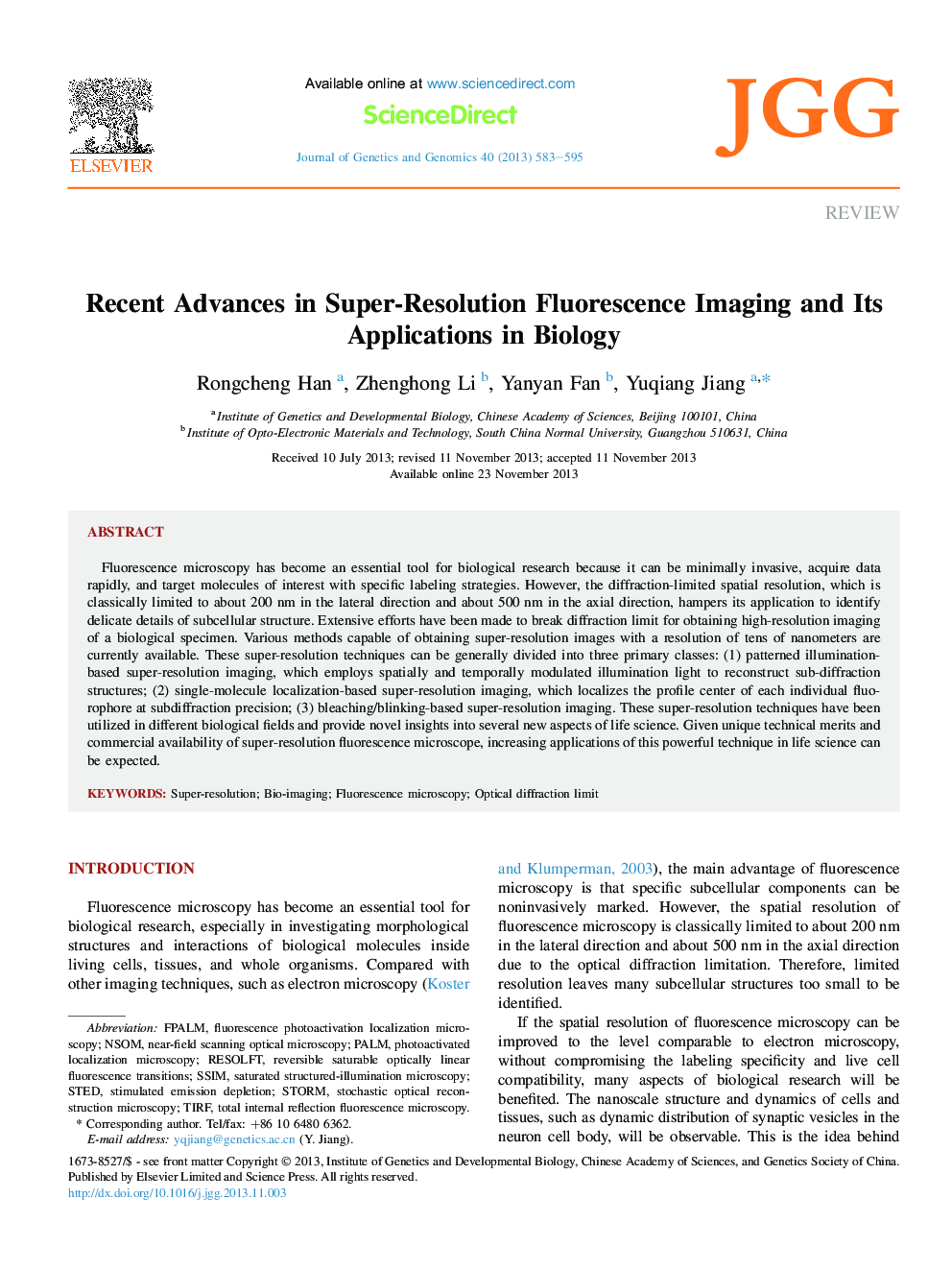| Article ID | Journal | Published Year | Pages | File Type |
|---|---|---|---|---|
| 2787371 | Journal of Genetics and Genomics | 2013 | 13 Pages |
Fluorescence microscopy has become an essential tool for biological research because it can be minimally invasive, acquire data rapidly, and target molecules of interest with specific labeling strategies. However, the diffraction-limited spatial resolution, which is classically limited to about 200 nm in the lateral direction and about 500 nm in the axial direction, hampers its application to identify delicate details of subcellular structure. Extensive efforts have been made to break diffraction limit for obtaining high-resolution imaging of a biological specimen. Various methods capable of obtaining super-resolution images with a resolution of tens of nanometers are currently available. These super-resolution techniques can be generally divided into three primary classes: (1) patterned illumination-based super-resolution imaging, which employs spatially and temporally modulated illumination light to reconstruct sub-diffraction structures; (2) single-molecule localization-based super-resolution imaging, which localizes the profile center of each individual fluorophore at subdiffraction precision; (3) bleaching/blinking-based super-resolution imaging. These super-resolution techniques have been utilized in different biological fields and provide novel insights into several new aspects of life science. Given unique technical merits and commercial availability of super-resolution fluorescence microscope, increasing applications of this powerful technique in life science can be expected.
